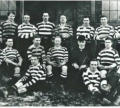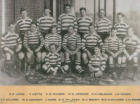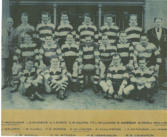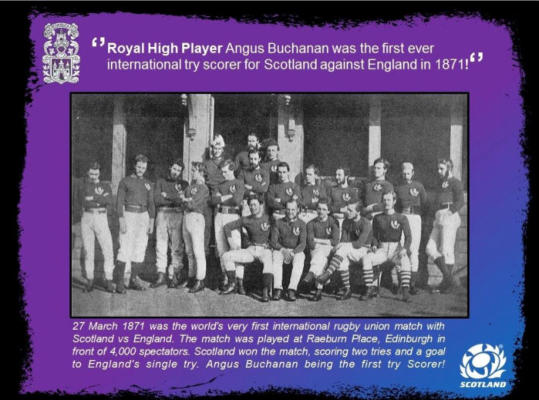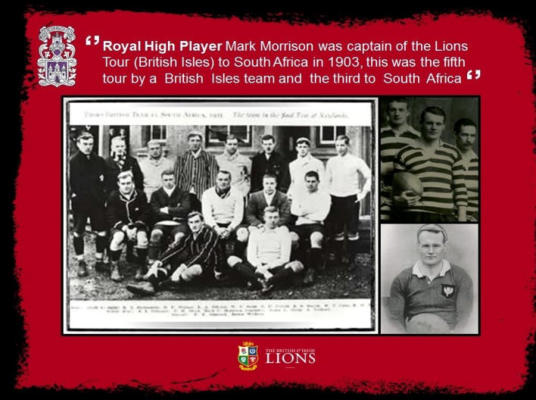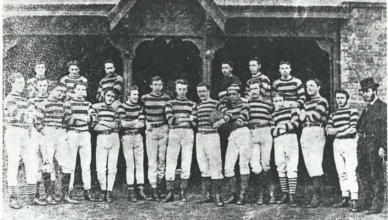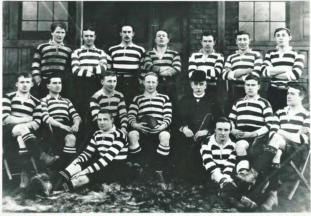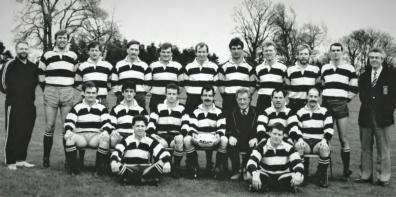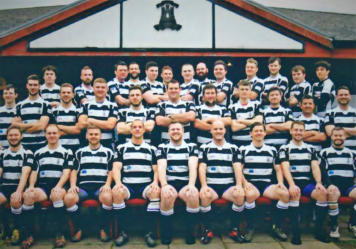

The Royal High Rugby club’s origins are to be
found in the Royal High School which means
they are covered by the mists of time. There is
some evidence, supplied by a famous academical
sportsman, that there was a carrier game played
in the school about 1810. This even provides a
link with Sir Walter Scott. The original laws of
Rugby Football were brought to the school in
1856 by an English public school boy.
The first game played by the capital F. P. Club
was in 1867 against the ‘Accies’ although the F.P.
Club was not formed until 1868 when the club
played it games at Holyrood. At that time the
club was open but unfortunately the Rector of
the school in 1870 insisted that only F. P.s would
be eligible to play.
When the club moved to play at Grange Loan it
entered one of its purple patches, under the
captaincy of Nat Watt 1881-1884. The team was
known as Nat’s ‘Lambs’ this nickname it did not
reflect their style of play. The lambs in
1883–1884 lost only one game and we are
recognised as the Champions of Scotland.
The turn of the century was dominated by the
career of Mark Morrison who played for Scotland
23 times, captaining them to a Triplecrown in
1901 and 1903 and then captaining the Lions on
their 1903 tour of South Africa. All this sporting
activity lead to Mark’s being posthumously
inducted into the S.R.U’s Hall of Fame and also to
the Scottish Sporting Hall of Fame.Like all clubs
there was no playing during the First World War.
Thanks to the efforts of J. Hume who along
with”Podger” Laing played for Scotland before
and after the work, the clock was revived with
the games against Stewartonians and
Heriotonians. In the April the club won the
Border Football War Memorial Cup at the Gala
Sevens. The War Memorial was the purchase of
Jocks Lodge for £1000. The club moved away
from its seventh ground Union Park.
The club had its second purple patch in the
1930s under the captaincy of W.D. (Bill) space
Emalie and international standoff, playing in
front of crowds of 2000. A three season spell of
fast open rugby culminated in 1933–34 with the
teams sharing the Unofficial Championship with
Hillhead. Bill also led a Seven in 1938 at Hawick
to a record 31-0 win over Hawick. In 1935 Peter
Tait had the dubious honour of receiving, in one
week, two postcards; one for the club seconds
and one for Scotland!
Following instructions to all clubs from the S.R.U.
no official games were played during the Second
World War. The club still managed to play 110
games, with the help of players home on leave
and school boys, who played again in the
afternoon for the second time.
Normal play was resumed in 1946–47 with the
club having another purple patch in the early
1950’s under the captaincy of Alex Harper. In
1951–52 Alex’s team was runner-up in the
Unofficial Championship. Two characters, T.P.L
McGlashan and J.Dignall made outstanding
contributions during this period and surpassed
P.W.Tait’s record number of matches for the club.
In 1972 after an expensive visit to the court, the
club returned to its original open status. Life
continues as normal with good and bad seasons
having to other purple patches under the
captaincy of Eric Ireland 1963-64 and Gerry
McCosh 1972-73.
To city council political decisions adversely
affected the club. Firstly the decision to build the
new school at Barton and not Jock’s Lodge and
the subsequent decision to terminate the City’s
annual grant towards the running costs of Jock’s
Lodge. These two decisions ultimately resulted in
the sale of Jock’s Lodge and a move to Barnton.
At Barnton the money from the sale of Jock’s
Lodge was used to build a new pavilion, and all-
weather hockey pitch and a bowling green.
Royal High now play in East Region Division One
and are aiming for promotion to the National
Leagues…
Club history
#150 years



Royal High were one of the founding members
of the Scottish Football Union with was later
renamed as the SRU. In the early years the
club produced many internationalists. It had
the honour of having Angus Buchanan play in
the first International against the ‘Auld Enemy’.
He scored the winning try which was the first
ever international try scored in rugby!
















































